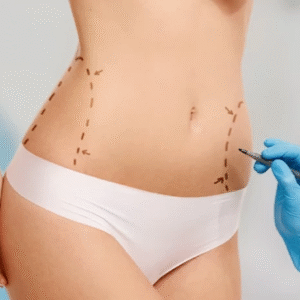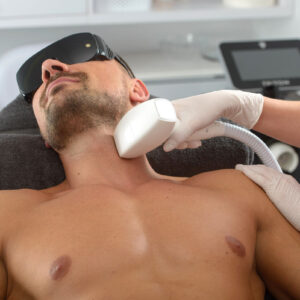Eyebrows are one of the most defining features of the face, shaping expressions and enhancing overall appearance. When eyebrows are thin, sparse, or uneven, it can affect confidence and how a person feels about their look. Eyebrow Hair Transplant in Abu Dhabi offers a lasting solution by restoring fullness and natural shape. For anyone considering this procedure, knowing what to expect can help ease concerns and prepare for a smooth experience.
Understanding the Eyebrow Hair Transplant Process
An eyebrow hair transplant involves moving healthy hair follicles—usually from the scalp—to the eyebrow region. This delicate procedure requires precision to ensure that the new hairs grow naturally in the correct direction, thickness, and density.
Unlike other cosmetic options, such as microblading or tattooing, hair transplants provide a permanent and natural alternative. The transplanted hairs behave like normal eyebrow hairs, growing over time and allowing for maintenance such as trimming.
Initial Consultation and Customized Planning
The first step before the transplant is a detailed consultation. During this meeting, the practitioner will evaluate your current eyebrows, skin type, and facial features. They’ll discuss your expectations, desired shape, and thickness.
A significant part of the planning involves designing an eyebrow shape tailored specifically to your face. This design process ensures the final result complements your natural features, maintaining balance and symmetry.
The Procedure: What Happens During an Eyebrow Hair Transplant?
The transplant itself is usually performed under local anesthesia to ensure comfort. The duration depends on the number of hairs being transplanted but typically lasts a few hours.
Healthy hair follicles are harvested using a method called Follicular Unit Extraction (FUE), where individual follicles are carefully removed from the donor area—commonly the back of the scalp. These follicles are then implanted one by one into tiny incisions made in the eyebrow region.
The angle and direction of each implanted hair are meticulously aligned with the natural growth pattern of your eyebrows to achieve a seamless appearance.
Immediate Aftercare and Recovery
After the procedure, you might notice mild redness, swelling, or tenderness around the treated area. These symptoms are common and usually resolve within a few days.
You’ll receive detailed aftercare instructions, which often include keeping the area clean, avoiding excessive touching, and refraining from makeup or skincare products on the brows for a short period.
It’s important to avoid strenuous activities or exposure to direct sunlight during the initial healing phase to promote optimal results.
Shedding Phase: What It Means and Why It Happens
One important stage to be aware of is the shedding phase. Within the first few weeks after the transplant, the newly implanted hairs will often fall out. This is a normal part of the process and not a cause for concern.
Shedding occurs because the hair follicles temporarily enter a resting phase after transplantation. Following this phase, new hairs will begin to grow steadily from the follicles, gradually filling in the brow area.
Growth and Final Results Timeline
New hair growth typically starts around 3 months post-procedure. Over the next several months, these hairs will thicken and mature, creating fuller, natural-looking eyebrows.
Most individuals see the complete results within 6 to 12 months, when the transplanted hairs blend seamlessly with the existing brows.
Maintaining Your New Eyebrows
Because transplanted hairs grow like regular scalp hair, they will require regular maintenance. This includes trimming to keep the shape tidy and gentle grooming.
Good skincare practices and protecting the eyebrow area from harsh environmental factors can help maintain the health and appearance of the new hair.
Benefits of Eyebrow Hair Transplants Over Other Methods
Eyebrow hair transplants offer a permanent, natural, and personalized solution compared to temporary methods like makeup, microblading, or eyebrow tattoos. They allow you to regain not only hair but also the freedom to style and shape your brows as you wish.
Additionally, tailored transplants consider your unique facial structure and natural hair direction, making the results look authentic and harmonious.
Frequently Asked Questions (FAQs)
Does the eyebrow transplant procedure hurt?
Local anesthesia is used to minimize discomfort during the procedure, and most people report minimal pain.
How long does the transplant session take?
Typically, sessions last between 2 to 4 hours, depending on the number of grafts being implanted.
When will I see the final results?
Initial hair growth begins around 3 months, with full results visible between 6 to 12 months.
Will the transplanted hairs need regular trimming?
Yes, since the transplanted hairs grow like scalp hair, they will need occasional trimming to maintain the desired shape.
Can eyebrow transplants correct scars or gaps?
Yes, they can restore hair in areas affected by scars, over-plucking, or natural thinning.
Is there any downtime after the procedure?
Downtime is minimal; most people resume normal activities within a day or two while following aftercare guidelines.
Can eyebrow hair transplants be done on previously tattooed or microbladed brows?
Yes, eyebrow hair transplants can be performed on areas with previous tattoos or microblading. The transplanted hairs grow naturally over time, and the procedure can help restore a more authentic and three-dimensional brow appearance.
How natural will my eyebrows look after the transplant?
Because each hair follicle is implanted individually and oriented to follow the natural growth pattern, the results are very natural-looking. Over time, the new hairs blend seamlessly with existing brow hair, creating a balanced and authentic appearance.
Are there any restrictions on activities after the transplant?
It’s generally recommended to avoid heavy exercise, swimming, or exposure to direct sunlight for at least a week after the procedure. Following specific aftercare instructions helps ensure proper healing and the best outcome.







